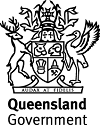Published Friday, 08 December, 2006 at 02:18 PM

JOINT STATEMENT
Premier and Minister for Trade
The Honourable Peter Beattie
Minister for Emergency Services
The Honourable Pat Purcell
BOOSTING INDIGENOUS COMMUNITIES’ RESILIENCE TO NATURAL DISASTERS
The Queensland Government will be working with Indigenous communities in Far North Queensland in an effort to improve their ability to cope with the impact of cyclones and other natural disasters.
Queensland Government officers will be visiting the remote communities to see if infrastructure can be improved or modified to ensure Indigenous communities can function after a disaster Queensland Premier Peter Beattie and Emergency Services Minister Pat Purcell said today.
The announcement is part of the 2006 Cyclone Summit Living with cyclones – Queensland prepared hosted this week by Mr Beattie at James Cook University, Cairns.
“Cyclones can have major impacts on power, water and telecommunications in these remote communities,” Mr Beattie said.
“Under the Improving Indigenous Communities’ Resilience to Natural Disasters Project, Emergency Management Queensland, The Department of Local Government, Planning, Sport and Recreation and other relevant departments’ staff will visit Indigenous communities on Cape York and in the Torres Strait.
“The teams will report on any improvements that can be made to minimise disruption.”
Mr Purcell said the first of the assessments being conducted as part of this initiative are currently taking place in Wujal Wujal. Other communities will be assessed within six months.
“We will inspect and test generators, power and water facilities and see how communications work in each location,” Mr Purcell said.
“We will also assess the suitability of back-up systems and will consider the need for additional resources such as generators and auxiliary power.
“Under the Indigenous Environmental Health Infrastructure Program the State Government provides funding for construction of such infrastructure as water and sewerage facilities.
“This includes working with Indigenous councils to assist in construction and also to develop their capacity to operate and maintain the infrastructure.
“As part of our operations and maintenance program, the Local Government and Planning Department is currently looking at all of the local government infrastructure in mainland Indigenous communities to identify what upgrade works are required.”
Communities involved in the initiative include:
Cape York - Aurukun, Coen, Hopevale, Kowanyama, Lockhart River, Mapoon, Pormpuraaw and Wujal Wujal
Torres Strait - Badu Island, Boigu Island, Darnley Island, Dauan Island, Hammond Island, Kubin, Mabuiag Island, Murray Island, Poruma Island, Saibai Island, Stephen Island, St Pauls, Warraber Island, Yam Island and Yorke Island.
Media inquiries: Premier’s office 3224 4500
Minister Purcell’s office Tim Shipstone 0409 620 571
8 December 2006
Queensland Government officers will be visiting the remote communities to see if infrastructure can be improved or modified to ensure Indigenous communities can function after a disaster Queensland Premier Peter Beattie and Emergency Services Minister Pat Purcell said today.
The announcement is part of the 2006 Cyclone Summit Living with cyclones – Queensland prepared hosted this week by Mr Beattie at James Cook University, Cairns.
“Cyclones can have major impacts on power, water and telecommunications in these remote communities,” Mr Beattie said.
“Under the Improving Indigenous Communities’ Resilience to Natural Disasters Project, Emergency Management Queensland, The Department of Local Government, Planning, Sport and Recreation and other relevant departments’ staff will visit Indigenous communities on Cape York and in the Torres Strait.
“The teams will report on any improvements that can be made to minimise disruption.”
Mr Purcell said the first of the assessments being conducted as part of this initiative are currently taking place in Wujal Wujal. Other communities will be assessed within six months.
“We will inspect and test generators, power and water facilities and see how communications work in each location,” Mr Purcell said.
“We will also assess the suitability of back-up systems and will consider the need for additional resources such as generators and auxiliary power.
“Under the Indigenous Environmental Health Infrastructure Program the State Government provides funding for construction of such infrastructure as water and sewerage facilities.
“This includes working with Indigenous councils to assist in construction and also to develop their capacity to operate and maintain the infrastructure.
“As part of our operations and maintenance program, the Local Government and Planning Department is currently looking at all of the local government infrastructure in mainland Indigenous communities to identify what upgrade works are required.”
Communities involved in the initiative include:
Cape York - Aurukun, Coen, Hopevale, Kowanyama, Lockhart River, Mapoon, Pormpuraaw and Wujal Wujal
Torres Strait - Badu Island, Boigu Island, Darnley Island, Dauan Island, Hammond Island, Kubin, Mabuiag Island, Murray Island, Poruma Island, Saibai Island, Stephen Island, St Pauls, Warraber Island, Yam Island and Yorke Island.
Media inquiries: Premier’s office 3224 4500
Minister Purcell’s office Tim Shipstone 0409 620 571
8 December 2006

